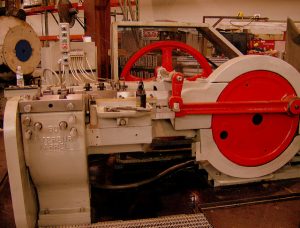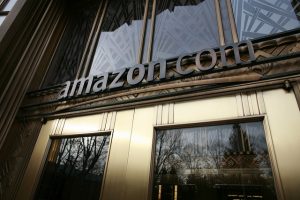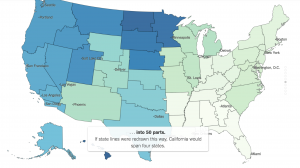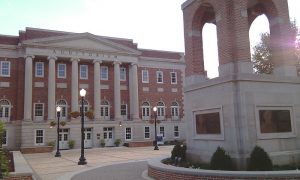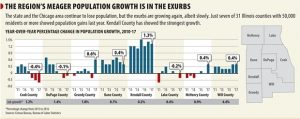My latest City Journal article from the Winter issue is now online. It's called "The Tech Campus Moves Downtown" and is about states and universities making geographic moves to better position themselves for the 21st century. It talks a lot about the University of Illinois and its Discovery Partners Institute plan, as well as Cornell Tech. Some excerpts: Much of today’s technology economy is located where a critical mass of talent and capital converge: on the campuses of elite research universities, in settings with strong entrepreneurial … [Read more...]
Don’t Fall in the Branding Trap
My latest piece is online in City Lab. It's another look at urban branding. Here's an excerpt. The problem with the typical approach extends beyond just marketing. It has tangible consequences. A brand is really a city’s conception of itself. By selling itself as a facsimile of something its not, a city ends up turning that into reality. Thus, so many urban places today seem vaguely the same—a blur of Edison-bulbed eateries and mid-rise “one plus five” apartment buildings (in which up to five stories of wood frame construction are built atop a … [Read more...]
The Overlooked Opportunity in the High-Tech Industrial Economy
Long time commenter and guest post contributor Rod Stevens, a real estate and economic development consultant at Business Street, joins me for the inaugural podcast of 2019 to talk about the overlooked opportunities in high tech industrial economic development. People tend to think of high tech as software or biotech, but there's often an under-the-radar high tech economy already in place in the overlooked industrial businesses of many communities. We talk about what these businesses are, where they are located, what they need, and why … [Read more...]
Coastal Branding Tactics for Heartland Cities
Indianapolis Monthly magazine just ran an interesting feature article on Gwendolyn Rogers, proprietor of a local store called the Cake Bake Shop. I have never been to it and am not the target market. But I thought there were a few interesting elements to it that are relevant not just to marketing businesses but cities. Rogers is not an Indianapolis native. She spent time living in Los Angeles and Idaho before arriving there. She had worked for a modeling agency in LA and her husband worked in the film industry. Perhaps because they both … [Read more...]
The Other Side of the Superstar Effect
A couple of folks had interesting counterpoints to the superstar effect. Neil Strickland gave me permission to post the following email he sent: I wonder if you've read, or if I've referred to, the Santa Fe Institute's highly cited 2007 paper in PNAS (Proceedings of the National Academy of Sciences) called "Growth, Innovation, Scaling, and the pace of life in cities." Its work was in "deriving growth equations which quantify the dramatic difference between growth fueled by innovation versus that driven by economies of scale. This difference … [Read more...]
Superstar Effect Wins Again as Amazon Chooses New York, Washington for HQ2/3
Amazon, obviously embarrassed at the way their HQ2 process has been received, leaked the results of the competition the night before Election Day, ensuring coverage will be largely muted. Amazon has reportedly decided to split HQ2 between two locations, New York City (Long Island City, Queens) and Washington (Crystal City, VA). I will have more analysis over the next several days, but this shows that the superstar effect is alive and well. Amazon chose note one but two elite coastal cities for its new headquarters. There's no other way … [Read more...]
Why Are State Boundaries So Significant?
There was some debate about why state boundaries, which seem irrelevant in many ways as they don't reflect real economic geographies (or often even cohesive communities) and are only sometimes on natural boundaries. Here again is are the 50 "Facebook States of America" from the NYT piece I posted last week. A lot of people went straight to the state university system as a reason for this. The argument is that people go in-state because it's cheaper, and this creates Facebook networks. That's probably some of it but the state … [Read more...]
What Happened After the Last HQ2 Competition
When I traveled to Oklahoma City for the first time a few years ago I was shocked to discover that in the civic narrative of the city's transformation - it's origin story if you will - the triggering event for change was losing a competition for a United Airlines maintenance facility in 1991 to Indianapolis. This United Airlines maintenance base was like a Foxconn or HQ2 of its era. It was a big deal because the thousands of jobs would be very high paying union mechanics and there were going to be a lot of them. It was anticipated that many … [Read more...]
Ranking Smaller College Towns
I recently revisited Bloomington, Indiana (home of Indiana University, my alma mater) and Charlottesville, VA (home of the University of Virginia). They got me thinking about college towns, so I pulled some data for various of them in this size class. These are communities roughly in the 125,000-250,000 population range that are home to major flagship (or similar) universities. I have 11 on my list. For this size class of community, I believe the best unit of analysis is the county. These are metro areas and can have outlying counties. But … [Read more...]
Sprawl Without Growth, Chicago Edition
I recently posted about sprawl in its purest form in Cleveland. Cuyahoga County massively expanded its urbanized footprint while the population remained the same. A couple of recent articles from Crain's Chicago highlight the same thing happening in that city - with the same results in terms of negative filtering of homes and stagnant to declining housing prices. Metro Chicago has lost population for the last two years. But a better way to characterize it is stagnant. The population shrinkage is tiny. On the other hand, the growth that … [Read more...]
- « Previous Page
- 1
- 2
- 3
- 4
- 5
- 6
- …
- 18
- Next Page »


